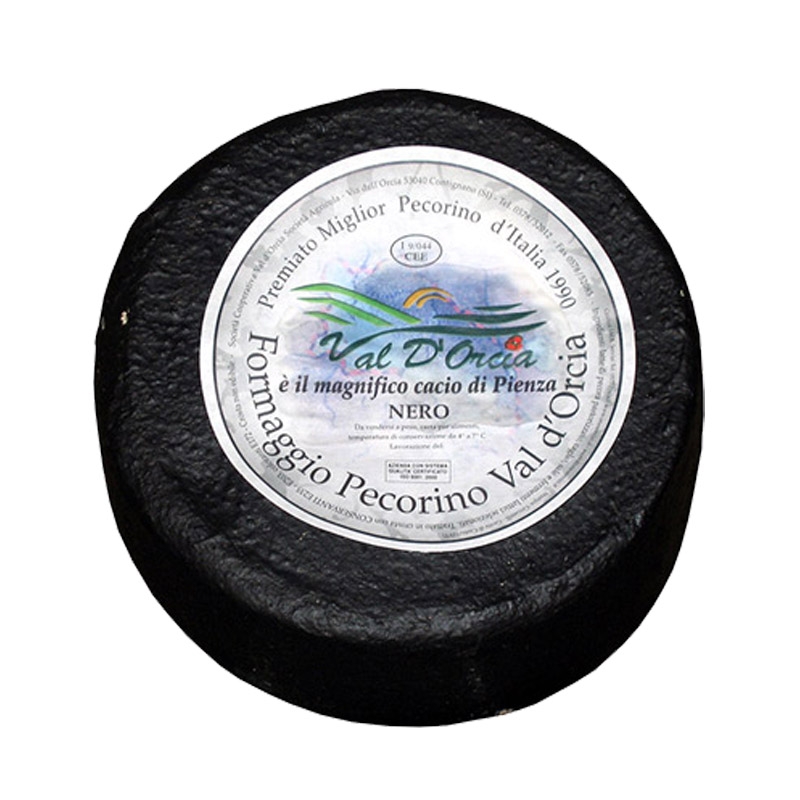
Description
Cacio nero di Pienza is a typical cheese from Siena. It is made exclusively from sheep's milk. It has a semi-hard texture, white in color and slightly crumbly. The flavor of this cheese distinguishes it from classic pecorino cheeses, as it is more delicately dry and intense. The aging process of Cacio di Pienza requires at least 40 days. The weight varies from 1.2 kg to about 2.2 kg. The typical black coloring is used for more aged pecorino cheeses. Pairings: Excellent on its own. Pairs well with cured meats such as: aged hams and salamis, we recommend savoring it with Barbera or other medium/high structure wines. Storage: In the refrigerator or in a cellar at controlled temperature. Processing: The raw milk is heated and calf rennet is added. The curd is broken, usually using a wooden stick. The paste is placed in molds where it takes the typical shape, and a light pressing is performed to remove the whey. The cheese is dry salted. Aging: 23 Other: ON THE SAMPLE AS IS WATER ACTIVITY AT 25°C Met:ISO 21807:2004 CENTESIMAL 0 976+/-0 009 MOISTURE Met.: UNI EN ISO 5534:2004 40 47+/-0 40 g/100g PROTEINS Met.: UNI EN ISO 14891:2002 24 0+/-1 3 g/100g (Nx6 25) FATS Met.: ISO 3433:2008 (DF 222:2008) 31 0+/-0 4 g/100g ASH Met.: DM 21/4/1986 SO GU N. 229 02/10/1986 PAR 10 3 49+/-0 11 g/100g CARBOHYDRATES Met.: MP 0297 rev 5 2014 1 04]0 2 46] g/100g ENERGY VALUE Met.:MP 0297 rev. 5 2014 379+/-3 Kcal/100g ENERGY VALUE Met.: MP 0297 rev 5 2014 1573+/-11 Kj/100g
Ingredients
Nutritional Analysis
Attention
Macronutrients (100 gr)
| Energy (kcal) | 379 |
| Carbohydrates (g) | 1.04 |
| Fat (g) | 31 |
| Protein (g) | 24 |
Nutritional Analysis
- Proteins24g·43%
- Carbohydrates1.04g·2%
- Fats31g·55%
- Fibers0g·0%
